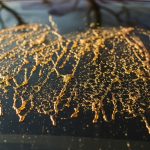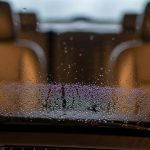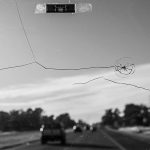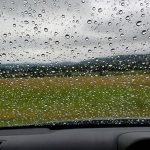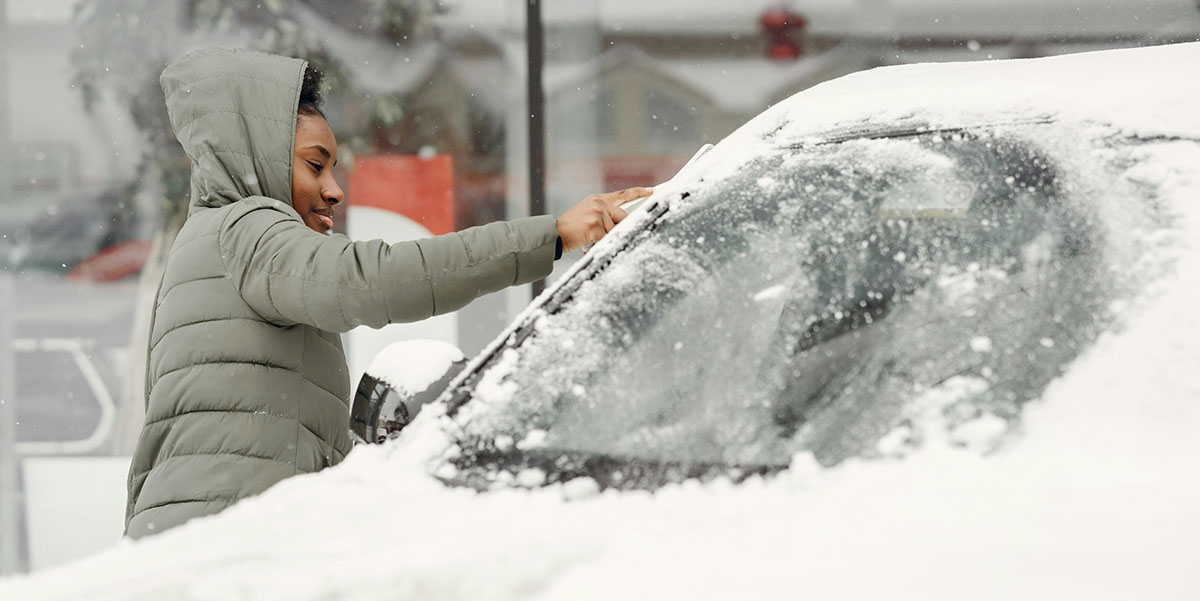
You wake up to a windshield sealed under a sheet of ice. You are already running late. You also know that hacking at it with a scraper can leave tiny scratches that catch the sun and glare back at you all winter. The goal here is simple: clear the glass fast without hurting it and do it in a way that holds up through a Canadian cold snap. If your glass is already damaged or showing cracks from past winters, it might be time to consider a windshield replacement before the cold makes it worse.
A Quick Reality Check for Canada
Driving with a blocked view is illegal across the country. Provinces ticket drivers who head out with frosted or snow-covered glass, and some jurisdictions add separate fines if snow or ice can fly off your vehicle. In Ontario, driving with an obstructed windshield can lead to fines ranging from $100 to $1,000, or up to $2,500 for commercial drivers, under Ontario’s Highway Traffic Act, Section 74.1 Quebec also warns against “mobile igloos” and fines drivers whose vehicles shed ice. Drivers across Canada are expected to remove snow from the roof, hood, and lights, and to clear all windows of frost and fog before heading out.
How to Get Ice Off a Windshield Without a Scraper
If you have ever wondered how to get ice off a windshield without a scraper, the safest method is to use controlled heat and the right de-icing agents instead of force. Mechanical scraping can create micro-scratches that weaken your glass over time. Skip the abrasion. Focus on heat, air circulation, and the right de-icing solutions.
Use Your Defrost System Properly
- Start the engine and set the temperature to hot with air directed to the defrost vents.
- Set the fan to high to move as much warm air across the glass as possible.
- Turn the A/C on. It sounds odd in winter, but it dries the air, helping melt ice outside and stop fog inside.
- Turn recirculation off. Pull in dry outside air instead of re-humidifying the cabin.
This steady process is one of the fastest ways to remove ice from windshield surfaces safely. It melts gradually, reducing stress on the glass and preventing cracks.
Add a De-Icer Spray
Commercial de-icers that use methanol or isopropyl alcohol can work in very low temperatures. Brush off loose snow first, then spray the ice, including around the wipers and mirrors. Let it sit briefly, then push away the slush with a soft brush or rubber squeegee. Apply the spray before driving, too. This helps de-ice windshield surfaces faster on future cold mornings.
Try a Reliable DIY Mix
If you prefer a homemade option, mix two parts 70% isopropyl alcohol with one part water. This rubbing alcohol de-icer spray works well and can be stored indoors overnight so it stays warm. Just do not leave the bottle in the car, or it will cool down and lose potency.
What Not to Use
Saltwater lowers the freezing point but leaves behind corrosive residue. It can damage paint, rubber seals, and metal around the windshield. If you are wondering what to use as an ice scraper, avoid makeshift tools like credit cards, knives, or metal objects, as these can gouge the glass. Stick with soft brushes or proper plastic scrapers for areas other than the windshield itself.
How to Get Snow Off a Car Without a Scraper
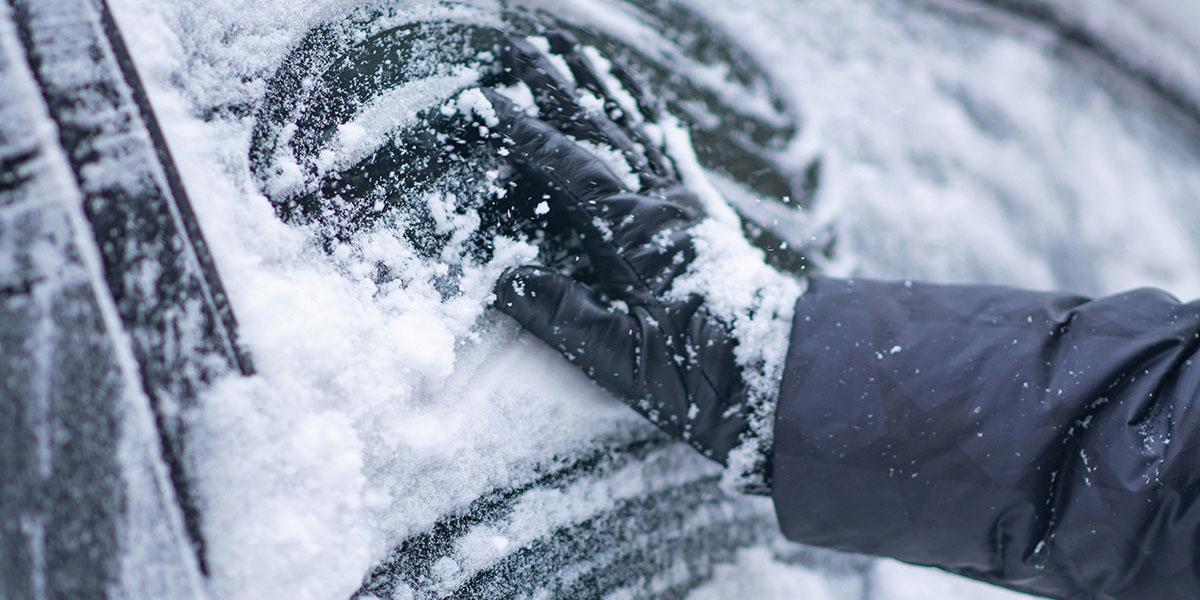
When it comes to getting snow off a car without a scraper, prevention and proper tools make a big difference. Use a snow brush with foam or microfiber bristles to remove snow from the car body, mirrors, and lights without scratching. Avoid using your wipers to clear heavy snow since they can tear or bend under the weight.
You can also use a windshield cover or frost guard overnight. These prevent moisture from bonding to the glass, saving time in the morning. Lift your wiper arms so the blades do not freeze to the windshield. For stubborn frost, turn on the defroster and let warm air work from inside while you brush gently from the outside.
Knowing How to Get Frost Off Windshield Surfaces
Learning how to get frost off windshield surfaces without a scraper helps prevent long-term wear. Hydrophobic glass coatings are worth it in Canada because they make frost easier to remove and protect against salt buildup. Applying one before winter means less ice sticks to the surface and less effort each morning.
Another simple trick is parking your car facing east if possible. The morning sun gives you a head start, melting frost naturally. Pair that with your defroster and a de-icer spray for a quick, low-effort routine.
Why Glass Cracks in the Cold
Windshields are laminated glass, but they are still sensitive to temperature changes. Sudden heat from one side causes thermal stress, which can turn tiny chips into visible cracks. To de-ice windshield glass safely, warm it gradually and avoid direct blasts of extreme heat.
Friendly Reminder: Do Not Pour Hot Water on Ice
Hot or boiling water can cause immediate cracking. The outside layer expands too quickly while the inner layer stays cold. You will also be left with refrozen water that is harder to remove later.
Aftercare to Protect the Glass
Road salt speeds up wear and corrosion. It can affect metal and seep into cracks and seams. Rinse your car regularly during winter and refill the washer fluid with a winter-grade mix. Use sand or kitty litter for traction instead of adding more salt around your vehicle.
And if you notice small lines starting to spread across your glass, learning how to stop a windshield crack from spreading can help you prevent a minor issue from turning into a full windshield replacement.
What to Keep in Your Winter Kit
Every Canadian driver should carry a snow brush, shovel, winter washer fluid, traction material, extra gloves, and a lock de-icer. Preparing in advance makes those minus-twenty mornings less stressful.
If you are cleaning up old adhesives or residue, knowing how to clean a car windshield lets you use safe ways to lift grime and buildup without scratching the glass.
FAQs About Windshield Frost and De-Icing
How Do You Get Rid of Frost On A Windshield?
To get rid of frost quickly, start your car, turn on the defroster with warm air, and use a de-ice windshield spray. For light frost, rubbing alcohol or a store-bought de-icer breaks the ice bond in under a minute. Never use hot water or sharp tools, as these can cause cracks or surface wear.
How Do You Defrost A Windshield?
The best way to defrost is from the inside out. Use the heater and A/C together, set to the windshield, and wait for the glass to warm evenly. Keep the windows slightly open to balance humidity and speed up the process. This prevents fogging and melts frost in a controlled way.
Can You Pour Cold Water On A Windshield?
Cold or room-temperature water will not crack the glass, but it is not very effective. It may freeze again quickly, creating a thicker layer of ice. Instead, spray a mild de-icer and use your defroster to finish the job safely. Cold water is only practical for rinsing off light snow, not for solid frost.
Conclusion
The best way to deal with ice and frost is to stay patient and consistent. Use steady heat and airflow instead of force. Spray a proper de-icer or a homemade alcohol mix before you start clearing. Protect your glass with hydrophobic coatings, and wash away road salt often to prevent corrosion. Keep a winter kit ready so you are never caught off guard on cold mornings.
If a crack grew overnight or a chip needs quick attention, reach out to Auto Glass Zone Oakville for professional service and a quote that fits your winter driving needs.
References
- Highway Traffic Act, R.S.O. 1990, C. H.8 | ontario.ca. www.ontario.ca/laws/statute/90h08.



